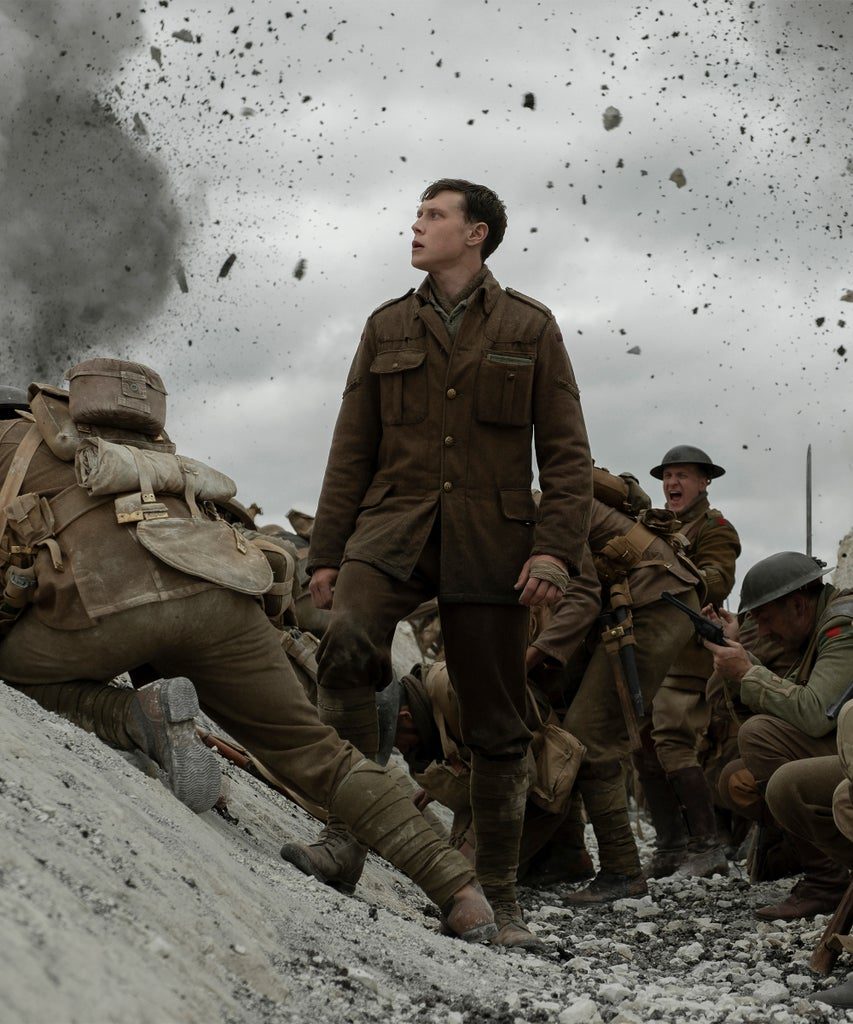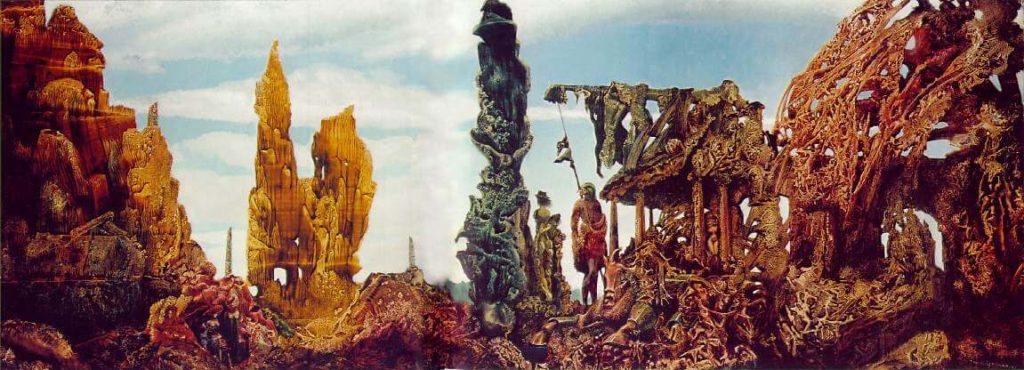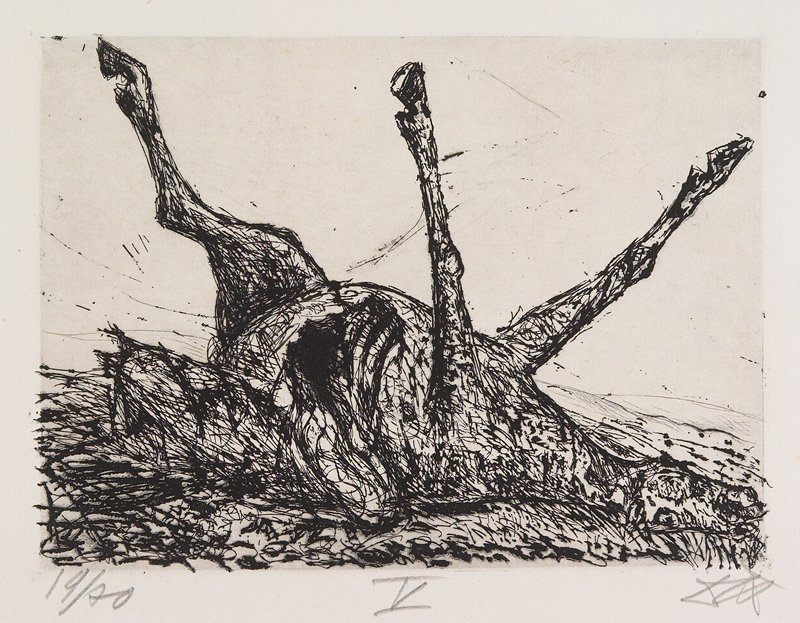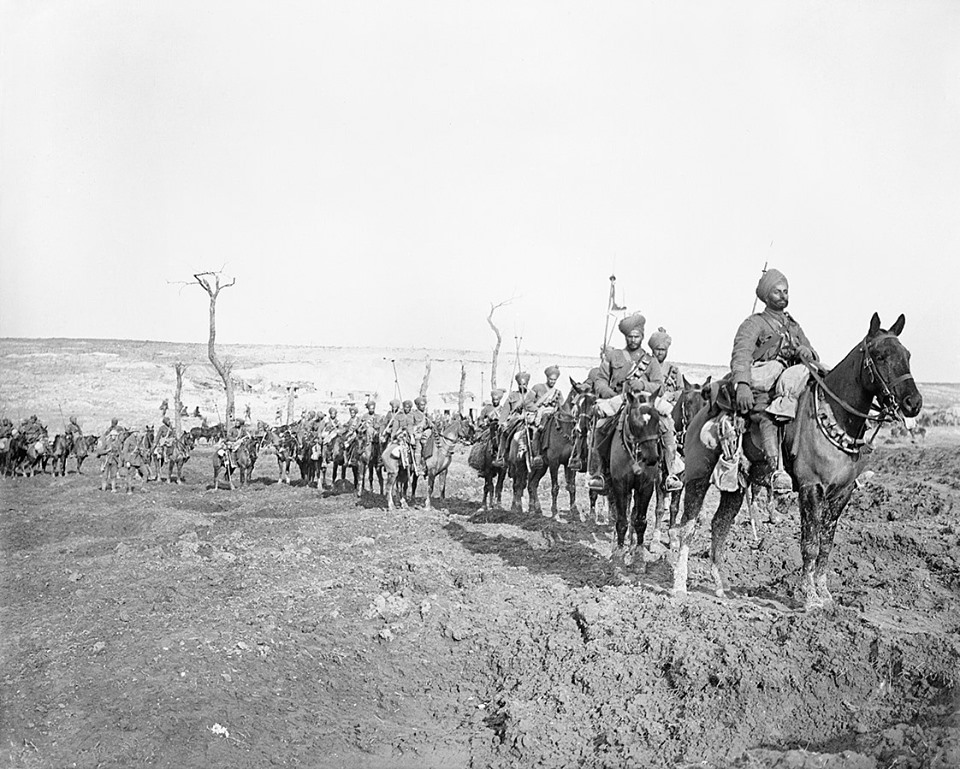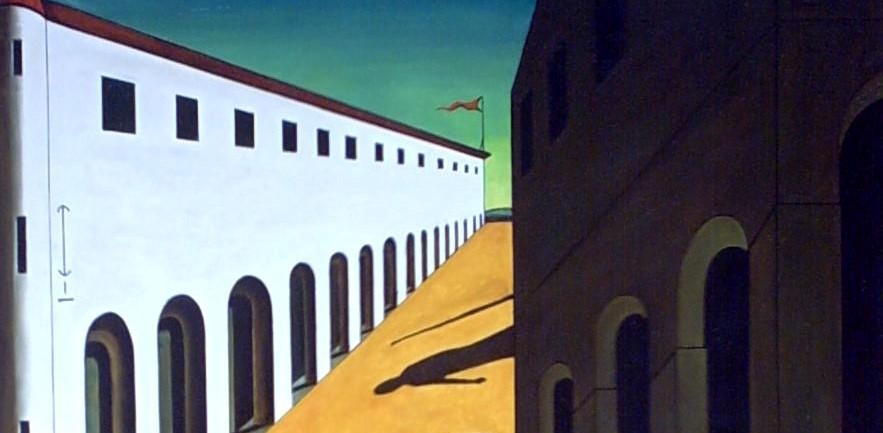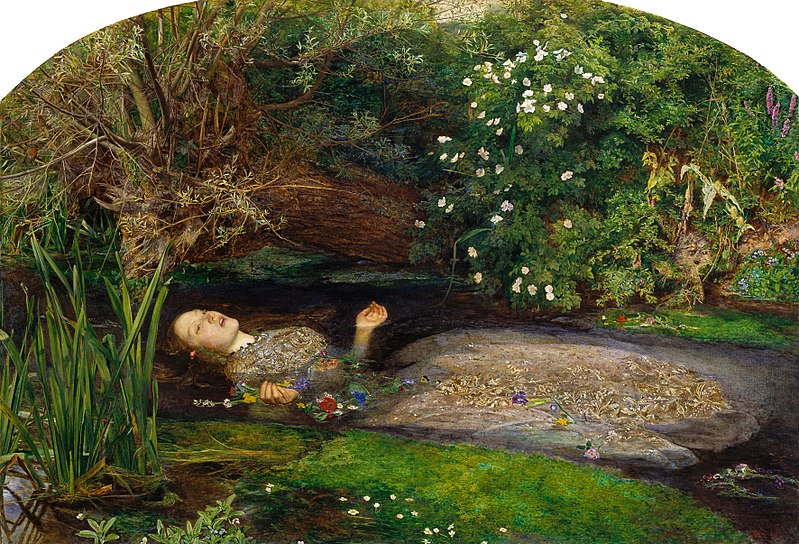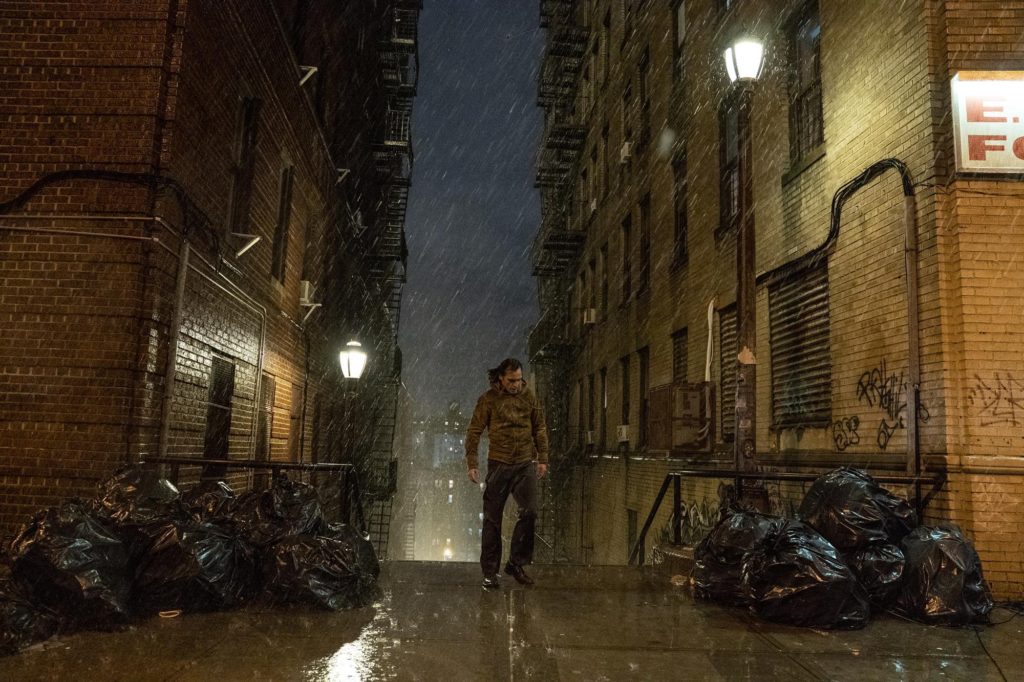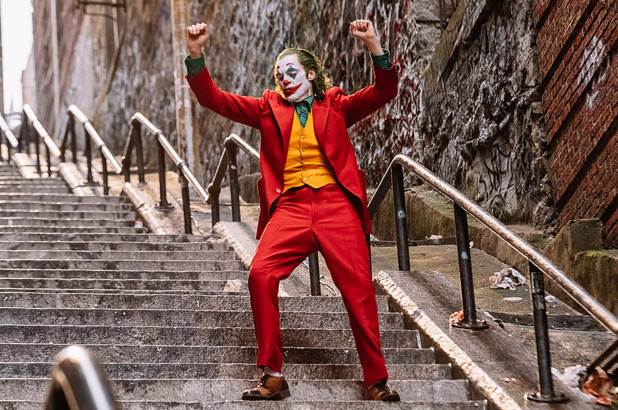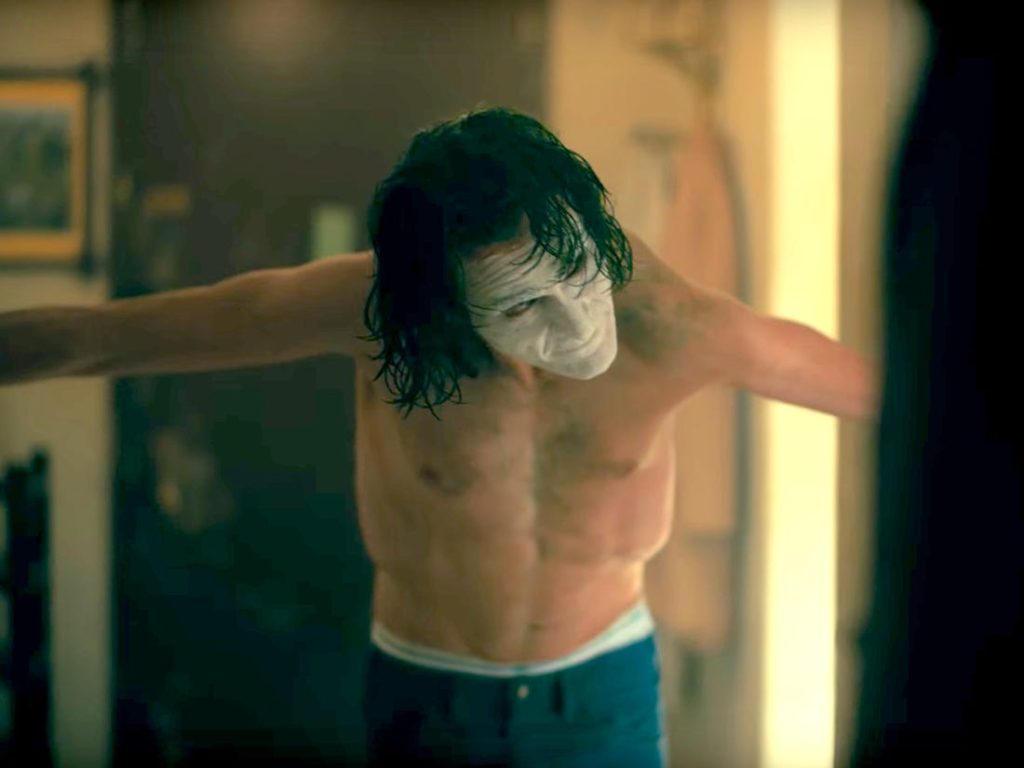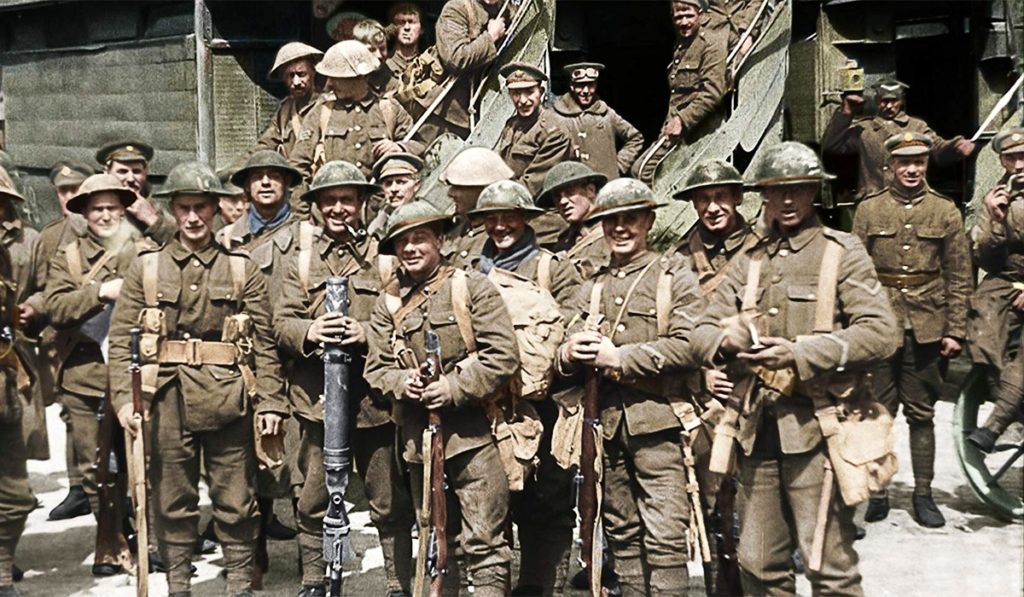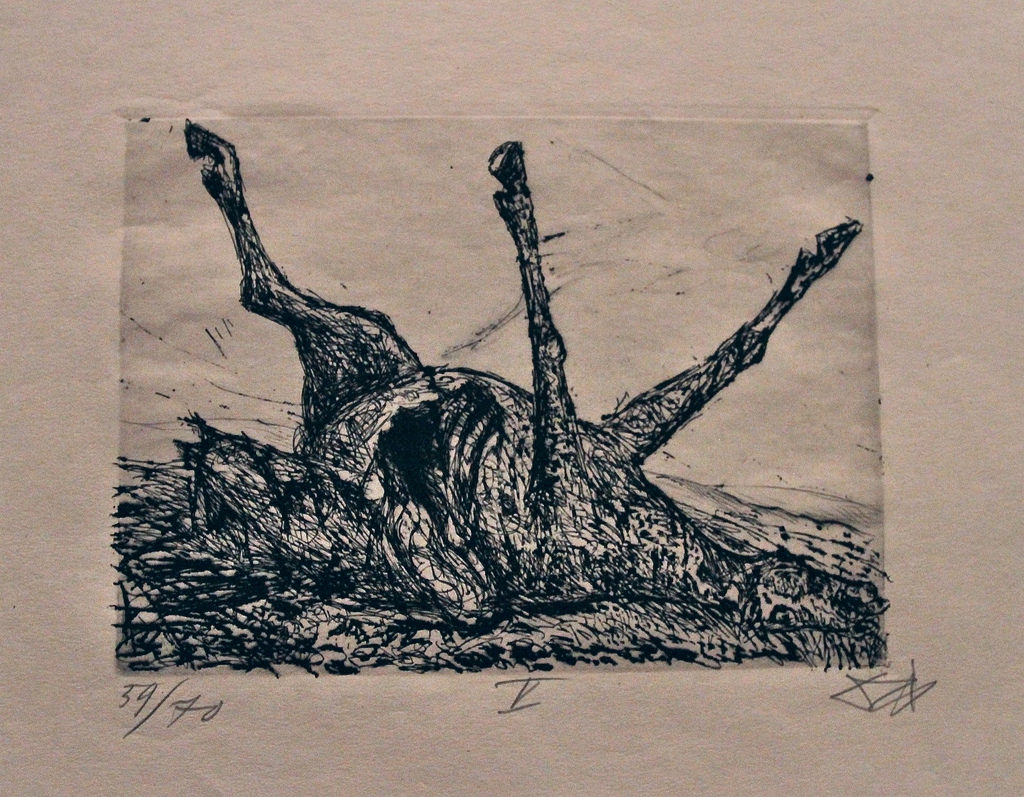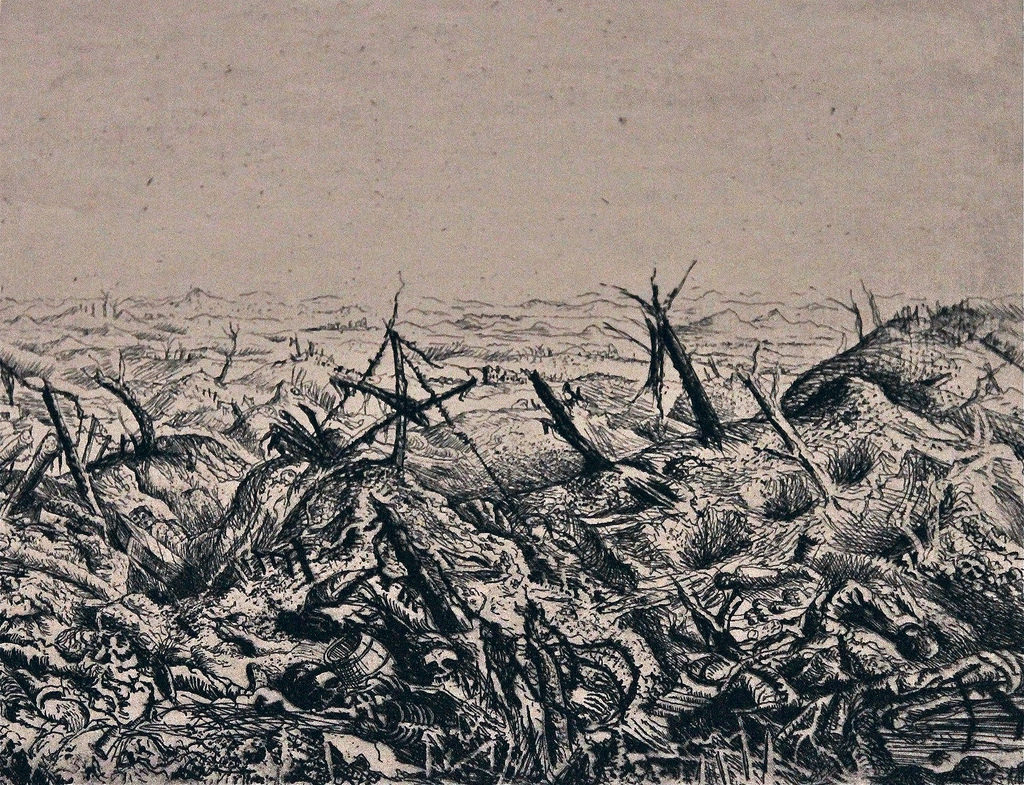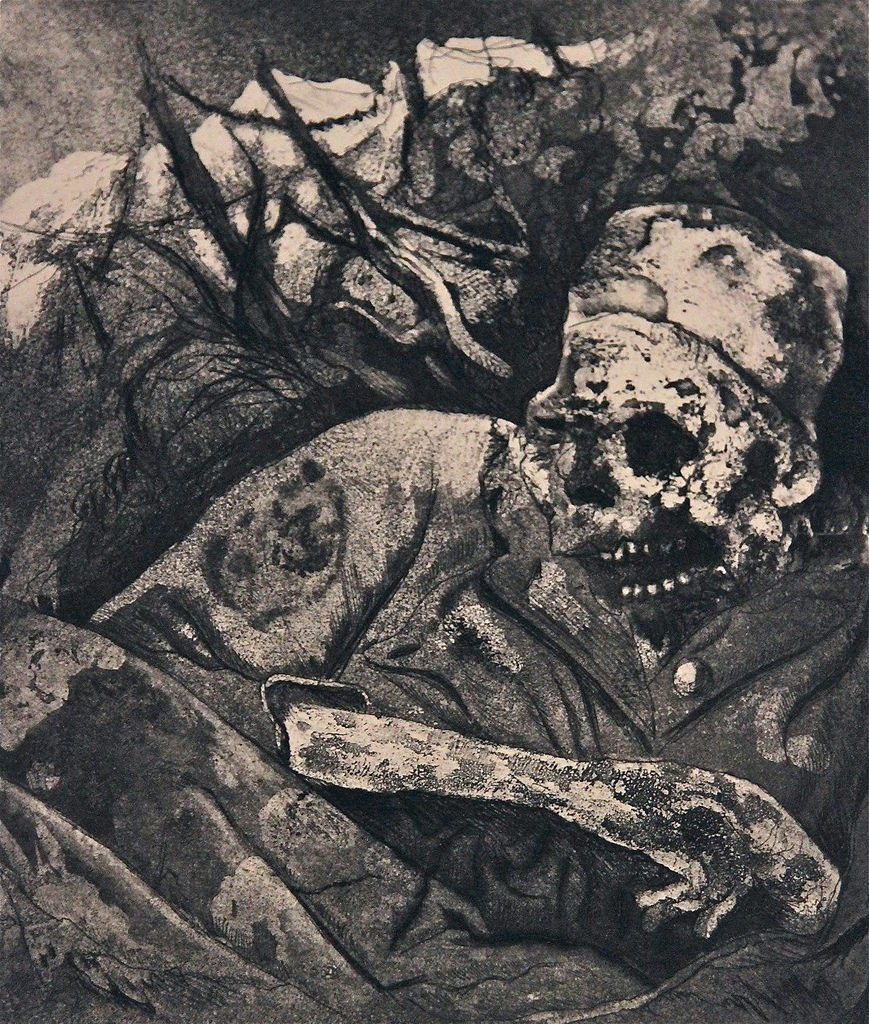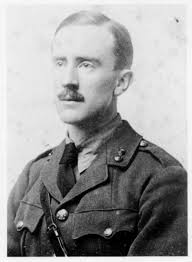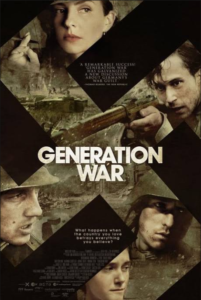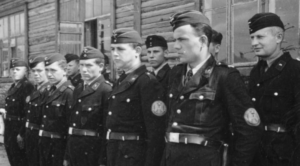An Interview with Filmmaker Jordan Martinez
First Sergeant Russell Tuason faces a dilemma: does he deploy once again to Iraq to lead the troops he has been training, or does he take a meritorious retirement from the Army and begin a family with his wife Krissy?
His best friend, Sgt. Emmanuel Sanchez (Ramon Rodriquez), tells him that he has already proven himself and has no need to return to battle, that he can “ride off into the sunset.” However, In Jordan Martinez’s 2019 film The Gatekeeper, Tuason feels that if he retires he will be abandoning his duty and his men, sacrificing his honor, but if he deploys he will be jeopardizing the hopes and dreams of his wife Krissy (Jennifer Marshall), and the promises he made to her. In an argument with his wife, he says, “If I don’t finish what I’ve started, then what kind of leader does that make me?,” a conflict that is at least as old The Odyssey. Tuason is torn between what he “wants to do” and what he “should do,” between family and duty. He chooses duty.
The Gatekeeper, Jordan Martinez’s first short film, begins with this conflict. Martinez explains that he “wanted to convey that going back is a choice. Russell doesn’t have to go, but he feels his sense of purpose or duty is to ensure the safety of his men.” Later on, we discover that Russell’s sense of duty isn’t the only thing compelling him. “Perhaps in his mind he believes he is choosing duty for the right reasons. Or is he lying to himself?”
The character of Tuason is portrayed by Christopher Loverro, an Army veteran of a 2005 deployment to Iraq, former SWAT Team member, and founder of Warriors for Peace Theatre. He remarks that he “struggled with suicide when I returned from Iraq, so much of what the character was going through were things I could relate to in my personal life. Everything my character in the film experienced were things that I could relate to or experienced personally or someone I served with experienced. I pulled from my own personal military bio or used soldiers and leaders I served with to pull from.”
The action shifts to Iraq, circa 2004, with Tuason’s company in a firefight with insurgents (shot at Blue Cloud Movie Ranch in one day of production). As Tuason enters a courtyard scanning for the enemy, camera work and special effects lead to a sense of spatial and temporal dislocation, creating disorientation and uncertainty. He hears the faint cries of a woman and enters a door which leads into a church. In a flash forward, he sees a flag-draped coffin (his?) and a woman, who in a later scene is shown to be his grieving widow.
Martinez, born in 1990, served for 10 years in the Army, which he joined at 17, training as a paratrooper and eventually becoming a Civil Affairs Specialist, with a deployment to Afghanistan. He says, “I was attracted to the military as a child. My sister was in the military at the time and I wanted nothing more than to go on an adventure and see the world. When I was about sixteen years old I knew my goal would be to join after high school and I wasn’t afraid of going overseas even though the wars were going full speed.”
After he left the service, Martinez had some jobs in various film productions. He learned about the graduate program in Cinematic Arts at USC and “made the second best decision of his life” to apply. He was accepted, and thus Martinez fulfilled a life-long dream to make movies, which began when he was eight years old growing up in Southern California. Brian DePalma’s Scarface (1983) made a significant impact, as did What Dreams May Come (1998), starring Robin Williams. The Wachowski brothers’ The Matrix (1999) and Christopher Nolan’s Inception (2010) were influential, he says, for their conceptual frameworks. While at USC, Martinez studied with such top industry professionals as Robert Nederhorst, Visual Effects Supervisor on John Wick 3, Academy Award Winner Michael Fink, and John Brennan, Virtual Production Lead on The Lion King (2019). The Gatekeeper is ground-breaking in utilizing on such a small project “motion-capture previsualization,” a type of digital storyboarding which allows complex scenes to be created before shooting, thus saving time on the set. All told, the film came to fruition over a year and a half, from the script to post-production to screenings at film festivals. The Gatekeeper is Martinez’ final project for his Master of Fine Arts in Cinematic Arts from USC. He graduated in December, 2019.
As the firefight continues the company is pinned down, and Tuason, now in command, faces another choice: return to the base or maintain its position and take the fight to the enemy. He decides that they will “stand our ground,” a fatal mistake that leads to the deaths of everyone in the company except Tuason. When he returns stateside he suffers from intense survivor’s guilt and believes that he “should have died there with them . . . They all died because of me.” At his best friend’s, Sanchez’s, funeral, shot at the Los Angeles National Cemetery, he hopes to obtain absolution from Sanchez’s widow, but she tells him that her husband is dead “all because you wanted to be a hero,” and referring to their daughter: “and now she has to grow up without hers.” This sends Tuason further into depression.
As he contemplates suicide, he is visited by Sanchez’ ghost. Sanchez is an emissary, but from where? Heaven? Hell? Is he the gatekeeper? As Tuason makes a final pact with Sanchez, he has visions of his childhood, his men, his wife and their newborn daughter being given up for adoption. The final shot of the film is a close up of Tuason’s face, eyes questioning, searching. Martinez provides no answers, preferring ambiguity and individual interpretations.
The film has been called a “military thriller” and a “psychological thriller,” but Martinez says ”it could be a military thriller, a psychological thriller, a supernatural thriller, a drama, a war film, and in all honesty it can be all of these. It just depends on your perspective. This was my initial goal in making the film because no one wants to be told what to believe. I really wanted it to start a conversation, perhaps even pose the question, ‘What did I just see?’”

Martinez wanted the film to be accurate in military aspects. Even though he was in the service for 10 years, he relied on Retired Army Sergeant Daniel Stroud to insure authenticity.
In a twist, Stroud was Loverro’s First Sergeant in Iraq in 2005 and Martinez’s Command Sergeant Major in Afghanistan in 2012. The casting of veterans in major roles and the use of veterans behind the camera was crucial to him, not only for realism but also to allow vets to tell their stories in the non-stereotypical ways he sees in many big-budget films. “Veterans were in front of and behind the camera,” he explains. “Veterans are the first to destroy a film for its lack of authenticity since they are trained to find flaws. Therefore, they are the hardest to please. I wanted to ensure I had extra attention to detail to make sure they were immersed in the experience since bringing them back to those memories of service was extremely important to me.” He notes that he’s received many emotional responses from military wives and veterans. He adds, “it’s an honor to be able to connect with those closest to the material.” His sentiment is shared by the film’s co-star, Jennifer Marshall, a Navy veteran from Denver, CO, who notes that she has occupied many roles related to the military: she has served, she has been a wife at home while her husband deployed, and she has lost friends both while serving and then to PTSD after coming home.
“I was honored to play the role and bring my real-life experiences to making her a real person.” Marshall adds, “It’s essential that veterans in Hollywood work with other veterans and bring our stories to the forefront. The alternative is Hollywood telling our stories for us . . . often times riddled with errors and half-truths.”
Loverro says, “War veterans offer an understanding and breadth of knowledge that give them an advantage a civilian actor or director might not have. That’s not to say civilians can’t make great films about war, obviously many have. However, during the making of the film we felt what we were telling ‘our’ story and that process in and of itself was cathartic.”
Beyond authenticity, Martinez’s overarching reason for making the film was to address PTSD and the human toll as a result of war, and by extension other types of trauma. Having lost friends to suicide, he wanted to show that an extreme decision has ramifications beyond the individual. He points out that civilian rates of suicide are also high and that many of those who have committed suicide had experienced trauma. “I think this film can touch on trauma of all types and that those experiences can negatively influence our judgment, leading us into a treacherous depression or a dangerous thought process.”

He hopes the film can start an honest conversation about what the military does to people, and that the purpose of the military can be both fighting wars and also healing those who fight in wars, and better preparing them for how war changes them as well as helping veterans readjust to civilian society. Aspects of the military mentality can take a toll not only on vets but also family members and he believes that more discussion in the country as a whole could help prevent veteran suicide.
Martinez’s long-term plan is to obtain funding to make a full-length feature of The Gatekeeper and receive theatrical distribution. He has a treatment for the entire film that he is ready to pitch to major studios. His goal is that the film will bring this conversation to national and international audiences.
The following is an interview between professor Larry Abbott and filmmaker, Jordan Martinez.
LARRY ABBOTT: Can we start with a bit about your background and how you came to be a filmmaker?
JORDAN MARTINEZ: I was born in 1990. I’m from Southern California. I grew up all around the area when I was a kid. My mom was a single mom. She moved around, county to county pretty much. I enlisted in the Army in 2008. Once I joined, I became a paratrooper, joined Civil Affairs, and eventually became a Civil Affairs Sergeant. I was deployed to Afghanistan in 2012 to 2013, in Kandahar Province.
After that, I was still in the Reserves, all the way up until last year. The last couple years, I started working in Japan for USFJ. I officially got out last year, a total of 11 years, most of it Reserves.
I started getting into film in 2013, when I got back from Afghanistan. I met a couple veterans who brought me to some organizations in Hollywood, got me some jobs here and there, and I started doing a lot of background production assistant work.
I realized that that was not the path toward becoming a director, which is what I always wanted to be from childhood. It’s a very difficult journey to become a director. There was a lot of opposition, but if I wanted to have a chance, I needed to get educated. I had my Bachelor’s Degree in Communications & Film, but I didn’t feel like it was really a substantial degree. I didn’t feel like it really taught me the technical skills I needed to work in an evolving film industry.
I entered the film program at USC and I’ve been there for the last four years. I learned a lot about the technical side, and I met a lot of great people, and got more experience. That’s exactly what I wanted, to have more stuff on my reel, build my network, learn more about the technical skills that are involved in filmmaking.
I had the opportunity to be mentored by an Academy Award winner, one of the visual effects supervisors for John Wick: Chapter 3. He was a great mentor of mine and still is. He helped me out with making The Gatekeeper, as far as telling me where I was going wrong, what I was doing right. The Gatekeeper was definitely the pinnacle of my work at USC.
ABBOTT: Why did you decide on a military theme?
MARTINEZ: I realized early on that military films are not really being told. It’s funny, because I didn’t really think, when I started in the film industry, that I was going to be a director of military-related films. I didn’t think that was my path. I didn’t think much about that genre-wise.
When I started going to USC I really started to think: Okay, I need to double-down on this because there’s no one else doing the job. There are no movies, in my opinion, that are really, at the moment, doing a lot of justice to the experiences of serving in post-9/11 wars. I started getting my feet wet with that.
2016 was very divisive. I really feel like it was similar to—maybe not quite the same, because I wasn’t born in that era—but similar division-wise to the Vietnam era. You had a lot of protests. You had people who just didn’t like the military. It’s unfortunate, but you get a lot of this in strongholds like Los Angeles and New York.
Regardless of all that, I made military-related films when there were people who didn’t really like the underlying messages, who thought they were controversial. But I told them that they were accurate and often based on actual events that happened to people.
I work very hard to get my films as authentic as possible because I know, as a veteran, how much we are willing to totally tear apart a movie. We look at something like American Sniper or all these high-budget movies and we say, “Hey, you had $100 million. Why couldn’t you get this shit right? Why couldn’t you hire someone, a veteran, to help you out or even tell the story?”
I think that’s part of the disconnect that I hope we’ll see change. We already are seeing “veteran” being its own diversity category. We’re not really being represented in the film industry at all. If you look at the demographics, veterans are the least represented in the film industry.
I think that this is changing, and I’ve already seen the beginnings of it. I hope it continues to change because veterans want to be able to tell their own stories. They want to be able to enjoy films that are accurate and that honor the sacrifice that veterans have made in service to this country to further the ideals of freedom and democracy that have really been under attack for quite some time.
I’m not political in any way. I’m very independent-minded, but I do believe in America. I do believe that the sacrifices of our veterans are being misunderstood and not really being taken in total account.
We look at Veterans Affairs, we see tons of suicides. For me, I’ve known people who have either attempted or actually committed suicide in the military. It totally turns the world upside down for everyone around them. Friends and family are destroyed. I think, for far too long, it’s been brushed under the rug.
The idea of The Gatekeeper began in 2015, believe it or not. It was my first film at USC. The original idea started when I saw What Dreams May Come, which is a Robin Williams film. It’s something that many of us think about in the military. It’s a military ideology: Valhalla, Warrior Heaven, and all that.
In the film Robin Williams’ character goes into hell to save his wife. I felt this was a keen idea of film in general, an interesting concept, and I combined that with the ideals of the military and the genre of the military itself. I think it is its own genre at this point. My film is not really a thriller. It’s not really military. It’s not really a drama. It’s all of those combined.
When I made the short film, sort of a prequel, I didn’t have enough money. Back in 2015, I didn’t have the assets. I did it for my first project at USC. It’s a very, very restrictive time constraint. You have five minutes! But it was really well-liked. A lot of people liked the concept, but it just wasn’t a big enough production. It didn’t have enough screen time. It didn’t have all those things that are necessary for a film.
USC is a very, I would say, liberal-minded campus, nothing wrong with that, but they are not into seeing the military in a positive light. I’m not making the military positive or negative. I’m making it authentic.
That’s something that I think is not being recognized in Hollywood. The military is either portrayed as super evil or super good. That’s just not what it is at all. It’s not super good. It’s not super bad. It’s just an ideology that people fall into who are supposed to support the Constitution and the country of the United States.
That’s the perspective that I didn’t see represented, so I decided to keep making films that show what it’s like being overseas as a soldier. I made a second film about Afghanistan. It was about a child suicide bomber. It got a lot of heat. A lot of people didn’t like the fact that I was getting into controversial things about the war.
I said, “Okay, cool. I’m hitting a button here. I’m hitting something. I’m getting a reaction out of people, which is, for better or worse, good.” As long as it comes from truth, I think that that’s a good place. Eventually, through my time at USC, I learned more and more, and I became known as “the military director.”
ABBOTT: How important is authenticity?
MARTINEZ: Eventually, I was getting close to the end of my time at USC. I was there for four years, from 2016 until December of 2019. The process for making a thesis film is really about three semesters, a little over a year, and the script for the thesis film was really pretty much the same thing as my original short, which was essentially the same concept as The Gatekeeper. I have the same main actor, who’s a good friend of mine, Chris Loverro. He himself is a war veteran. He’s an amazing patriot, amazing veteran, amazing theatrical actor. My relationship with Chris is so strong I knew that I was going to be able to pull this film off with him.
For The Gatekeeper, he was instrumental with helping me build the firing range shown in the film, with helping me get right certain things that a high-ranking soldier would do. Even though I was in the military for ten years, I couldn’t know everything. I think that’s where Hollywood gets it wrong. They have directors who have spent zero time in the military, and then they don’t even listen to the military advisor that the studio has provided for them.
I really tried to make the film as authentic as possible, as military people will totally rip apart any little thing that’s incorrect in a movie. It’s like, hey, if I’m going to be known as a military director, I better make sure I have this complete on lock the weapons, the uniforms, the jargon, the tactics, everything single thing has to be completely on point.
ABBOTT: How did the actual shoot progress?
MARTINEZ: We filmed The Gatekeeper in six and a half days. That was all we could afford within our budget. I was lucky enough to be able to get some financial help. I did spend a lot of my own money to get the project going, which I saved during my time in service, and then also I got scholarships and grants. I was very fortunate to get help from the Robert Rodriquez Scholarship, as well as a few other people that were kind enough to donate as well.
I built a lot of connections within my time at USC as well, so the weapons and the locations and everything like that, a lot of it I got for free or next to nothing, which was a huge help in being able to pull this thing off.
I had great help from people who chipped in their time, chipped in their energy, a lot of veterans that I knew within Hollywood that I had built a relationship with who knew me came out of the woodwork to make this film come alive. Jennifer Marshall, she’s probably the most well-known actress in the film. She’s been in Stranger Things. She’s been in Hawaii Five-0. She has her own television show on CW called Mysteries Decoded.
It was a long and grueling process, but also a great process to collaborate with cast members who are veterans. I wanted to make this movie after I learned that a friend of mind had committed suicide around May 2018. I found out that he had hanged himself. It finally struck me that veteran suicide is a big problem. Essentially, I wanted to be able to convey to veterans, in their own language, how suicide is not the answer, no matter how depressed one is. Anybody can be susceptible to suicide.
ABBOTT: How does this concern come out in the film?
MARTINEZ: The lead character, Tuason, is the highest-ranking member in the platoon, the first sergeant. Even he can be susceptible to depression. That’s what I wanted to show. You’re not weak for showing guilt.
A lot of this movie has to do with my own experiences. Some of the characters reflect my own perception about how the military really functions. Too many times we hear things that are not helpful to soldiers. I think there can be some change within the military to help people.
In my opinion, it’s definitely against human nature to kill one another and see one another killed, and it can cause quite a lot of damage psychologically and spiritually to people.
That’s the thing a lot of people don’t see, too, especially from the outside, is that the experience is not all sobs and horrors. It’s also very exhilarating and addicting. I virtually don’t know any veteran who wouldn’t go back overseas. I honestly don’t think I know one. Every veteran I talk to, if you asked them today, “If you could put your gear on and you could go back to a war zone, would you do it?” I would guarantee you 75%, if not more, would say that they want to.
Once that feeling is in your blood, once that level of excitement is in your blood, it’s impossible to top. Risky behavior, driving a fast car—that’s why you see a lot of veterans on motorcycles, because that’s the closest they can get to the type of thrill that makes them feel alive.
There’s absolutely a psychological effect that combat has on people. Whether it’s addicting or thrill-seeking, or whether it’s a combination cocktail of all of those things, there is that element that you see in The Gatekeeper.
For me, I think there are a lot of similarities in the cultures of religious ideology and military ideology. There’s loyalty. There’s the idea of seeing each other in the afterlife. There’s the idea of a higher purpose, of renouncing the individual self for the group.
That’s what I wanted to show in The Gatekeeper as well. The whole scene, to Tuason, is about him believing that he’s going to see his friend in the afterlife. This is something that is absolutely real in the military.
LA: Sanchez, Tuason’s best friend, does appear as a ghost. What exactly does the title refer to?
JM: The title refers to multiple things, but the main thing is the gate between heaven and hell. That’s what Sanchez’ character in the afterlife is supposed to portray. It also has a dual meaning because the main character is somebody that essentially keeps the enemy at the gates as well. That’s the big question: Who is really the gatekeeper? It is Tuason or is it Sanchez?
I also wanted to make this film connecting to people that believed in theism or people that were non-theist. That was very important to me. I wanted it to be connected on both sides. There’s a huge religious element to the film, even in the beginning, when he says, “You’re gonna send these guys to the afterlife.” It’s very strong in the narrative.
What I wanted to convey with this is that Tuason’s belief system is, in my opinion, religious. The United States is still a Christian religious country.
LA: What were you after at the end of the film?
JM: At the very end, did he go to hell, or was it a hell he felt psychologically? You can perceive it in both ways. We all share this one thing that’s on our minds more than others: the thought of death and the thought of going back into the earth, if there is life after death, and all of these other types of constructs. The life-after-death construct is definitely heavy—and has always been heavy—within the warrior mentality, because there’s just so much of it within that culture.
I definitely had a very deep philosophical angle that I wanted to show. The main thing is that a lot of veterans are suffering and they are not only feeling guilt, but there is also the ideology of honor that is in the military ideology.
I think honor’s great. It’s great that people have the Medal of Honor. And the ideas and concepts of honor are good in a lot of ways. But I also think, in other ways, when we start to really look at it, it can have negative effects. How do you define honor? Can honor be fully achieved? What is the effect of lost honor?
I don’t think people in the very strongholds of Hollywood care, to be honest with you. I don’t think they really care about the veterans’ suffering. I think they believe that the wars are evil. I think that this is a huge, how do I say, misfortune. It’s a huge misfortune for all of us, because we’re not getting movies like The Gatekeeper that can ask more questions. I want the audience to ask questions. I don’t want to tell you what exactly it means. I want you to find a deeper meaning to it.
For me, my deeper meaning is: When we tell somebody they need to aspire to a sense of honor, and then you take it all away from them overnight, all these ideas of being a soldier, with the Tuason character, he didn’t feel like he had achieved that honor, and that’s where the guilt comes in, where he felt like he wanted to go back to combat, because he wanted more of this experience. This can absolutely crush and destroy people.
LA: The ending of the film is ambiguous. Tuason goes to the hospital and talks to Sanchez. You use some special visual effects.
JM: Not to give away any of this, but what I was trying to say with that—the veins, the choking—is it really does feel like we cannot communicate with the rest of the world. The pain he was feeling throughout the film suffocated him. That is much more common and much more real: the war within the self.
Tuason joins the firefight to save his troops, which is definitely an honorable thing to do, but he makes the decision to not retreat and essentially go for revenge, for the satisfaction of killing the enemy and completing the mission. It doesn’t work out. More of his men are lost because of his decision. He loses everything, including his own mental health.
You can’t talk to the military about PTSD or you will be yanked from your command. All sort of repercussions would happen if you had any psychological disruption, especially during that period in Iraq of the ’03-’05 era.
The military has definitely gotten better at this, but Tuason felt that he couldn’t to talk to anyone within the military or within his family. He’s being psychologically choked. He can’t breathe at that moment because he’s being pulled back into hell as well. So, there’s a supernatural element combined with the element of his being suffocated, in so much pain, with this depression, this guilt, not being able to connect with anyone. It’s a dual feeling that I was portraying there.
And then, with him at the very end, I wanted to add some suspense if he was going to kill himself or not. I wanted people to see what it is like to be in that suicidal state so they don’t get to that state. I want veterans to feel what it would actually be like to be in that state—you’re probably not immediately going to die in any certain circumstance. I don’t care if you jump off a roof. You’re probably still going to be conscious for some period of time, according to scientific data.
Even if you shoot yourself in the head, you’re probably going to feel that pain of not being able to go back, the real regret. Who knows what goes on at that point? We don’t know what kind of ideas and dreams you have before you leave this world. I wanted to show that Tuason felt the pain, he saw the pain, of leaving his wife and have her shatter to pieces. She’ll never be the same person again after her husband’s death.
LA: When she’s in the hospital bed, giving birth to the child she always wanted, the image of her is in black and white and her face is distorted.
JM: She’s distorted. That’s what the underlying message is that she’s a shell of what she could’ve been and he gets to see the baby girl. He gets to feel the real pain of his ultimate decision, which is irreversible, of killing himself. That’s what I want veterans to see.
And not just veterans. I wanted to connect with everyone. Even though this film is centered toward the veteran, I think a lot of people can understand the suicidal impulse. It doesn’t matter if you were a first sergeant in the Army. That doesn’t matter. What matters is that we all feel trauma. We all feel pain. We all sometimes feel like quitting, especially right now, with this coronavirus situation. There’s a lot of depression, I’m sure, going on. The real tragedy is to give up and to give in. Taking your life is something that will affect all of those people around you in many different dimensions.
I wanted to be able to send that message to the big screen, because we’re just seeing too much of this happening in our society. It’s really an epidemic, maybe a pandemic, but there are is a shocking number of veterans who are committing suicide. I’ve seen it happen too many times. We’ve see the data.
LA: What were your influences growing up, filmmakers or otherwise?
JM: I’m a huge fan of Scarface. When I was eight years old, in 1998, I saw Scarface for the first time, and that’s when I knew I wanted to become a filmmaker. There was something about that film that made so much sense to me. It was just such a beautifully directed film.
Obviously, it was a little beyond my time. I was very young and the movie was probably ten years old at that point, or whatever, at least. But I just connected with it in such a way, and I kept watching it and watching it and watching it. It’s a three-hour movie. I just fell in love with the artistic side of that film.
The Matrix was also a favorite film of mine from my era. There’s a sleekness to The Matrix that I tried to emulate—being in another world, different dimensions. That’s kind of what you see in The Gatekeeper. I tried to combine that sleek and slickness as much as I could.
LA: The Gatekeeper’s structure is certainly non-linear.
JM: Exactly. The whole movie is really jumping between timelines. That’s something I picked up from Inception. It’s not my favorite movie by any means, but I do appreciate the non-linear “what’s real, what’s not real” element. I liked the concepts it was trying to master, and I borrowed a lot of those things, as much as I could, to put into The Gatekeeper.
Every film borrows ideas from others. We all know this. It’s just what happens. There’s a lot I borrowed from What Dreams May Come. You could arguably say The Gatekeeper is What Dreams May Come meets American Sniper. That’s really what it is.
There’s this whole ideal in the military “sweat more, bleed less.” But death can come to anyone in the military. Under bad leadership, everyone can be vulnerable to death.
But you are also vulnerable under good leadership. It could be an unfortunate event. It’s really your perspective. Death is random. It’s the luck of the draw. It doesn’t matter sometimes how skilled you are. It can matter, but it’s multitudes of things. We all like to think—and we are all trained in the military to believe—that it’s not luck, that it’s really how well-trained you are.
I think we have to talk about these tough things in order to really bring change. We can’t have them taboo forever. We’ve been so under the spell of “Oh, yeah, you can never talk about politics. You can never talk about religion. You can never talk about veteran experience, because they’re all sacred.”
I don’t buy into that. I think when we don’t talk about those issues, it leads to this toxic cocktail of isolation. Veterans in the Vietnam War and the current wars, too, have been forced to kill children. We see a little bit of this in American Sniper. People are using children as soldiers, and that really can screw up the psyche of a soldier, being forced, essentially, to kill children. That’s just one example—women, children, innocents.
So, if we don’t talk about it, if we’re barred from talking about it and we’re being forced to live within this illusion, that has repercussions and can damage veterans.
LA: Have you shown the film to other veterans? Any feedback from them?
JM: I have. I did a screening, an educational screening, in downtown Los Angeles, where USC is. I showed it to a bunch of veterans. We had a huge amount of people come. It was the first actual screening of the film. I had people cry. I had a woman whose husband was a Vietnam veteran, and she said there was so much of that film that she, as a wife, could connect to. So, that was really powerful for me to see her so emotional from this film.
I’ve shown it to other veterans as well. They have been very emotional after seeing the film, knowing that I tried to show the truth in the way that veterans think, and that veterans within our communities are essentially silent when they kill themselves.
Honestly, I don’t think I’ve had a veteran who hasn’t understood the film at some level. Combat veterans love the film. They totally get it—Army, Marine Corps. It doesn’t matter what era, because the movie is showing what the ideals of military service are.
But the film is not just for vets. I wanted to be able to connect with civilians. I think they are emotional through it, in a sense, and they can see how war can have negative impacts overall on people’s mental health. Suicide is not just a veterans’ issue.
I would love to be able to get this in front of people in Washington. I’ve been working toward that as well. But if I can get tapped in to Washington, I think there could be some great ideas in being able to work together and promote content that is more accurate to mental health issues.
LA: You’ve said, “I want to make a difference and start a conversation. I think The Gatekeeper can save veteran and civilian lives.”
JM: That’s the overall goal of the film. You could call it a deterrent. Sure. But we use deterrents in society all the time. We have police deterrents. You can’t go to the beach right now in LA. You get a $100 ticket.
So, deterrents aren’t necessarily a bad thing. They can be used for good, especially when society needs to be pushed back in the right direction.
You take somebody who’s had an enormous amount of power, enormous amount of respect and responsibility, and then they get out of that world. Maybe they hated aspects of it and maybe they loved aspects of it, but now there’s nothing. We couldn’t really get into it within the film. There just wasn’t enough time. But that element of nihilism, that’s what I firmly believe is the number one killer. I think what a lot of veterans go through is a sense of needing direction and purpose.
I want to stop them from killing themselves and make other narratives that are better. It’s a huge thing for me to be able to hire veterans. I hire a lot of veterans with my own money. I don’t live in a mansion over here in LA. I live in a very small apartment. But I paid a lot of veterans to be able to come out, help me out, and make a film that, overall, is essentially a deterrent—specifically for veterans, but it could also be for everyone in these dark times.
LA: You see that theme of the difficulty of returning to the civilian world in a lot of the films and the novels and the stories. In War, Sebastian Junger mentions Brendan O’Byrne, who comes back to society and nothing is life and death anymore, whereas, in war, an untied bootlace could mean your death. You come back to the civilian world and nothing has that import anymore.
Tim O’Brien writes about a buddy of his, Bowker, who comes back from Vietnam but can’t fit in anywhere. He drives around and around in circles all day, before finally killing himself.
You see this in Hemingway’s story “Soldiers Home.” Krebs comes back and he can’t fit into the family anymore. He can’t fit into society. Religion fails him. At the end of the story, he just leaves; he can’t bear being back home again.
Anyway, your film is notable for using 3D motion capture and digital storyboarding. How important was that to you?
JM: I’ll put it this way: there were not enough hours in the day to finish the film without that previsualization, because it’s so important from a production angle.
It is a storyboard on steroids. Using that technology would’ve probably cost me $30,000 in Hollywood, at least. But, because I used USC’s technology and the information that I learned from being a student there, I was able to plan every single shot of my movie. We shot all the Iraq war scenes in one day. That was an incredible amount of footage to be able to capture in one day. Everything was planned because I had that previsualization.
A lot of the process of movie-making—even George Lucas talks about it—is to keep it in the parameters that you have, the resources, the time, the ability. I was able to mobilize all the various components—and you know what the beauty of it is? My experience in the military is all about planning. It’s all about preparation and then execution.
So, because of my background, I was able to have that discipline and plan the film out as much as I possible could. I think The Gatekeeper looks a lot closer to a Hollywood film than a lot of student projects because of that reason, because of my background. My military training helped out a lot.
LA: You have multiple settings. There is a cemetery, the interiors, a hospital, battle scenes, a rifle range.
JM: The VA actually allowed me to film at the West LA National Cemetery. I filmed the range out in the middle of the desert. I actually built that range with my bare hands and help from my command sergeant major and a couple other Marines.
The film was impossible to do without the veteran community. When we all come together, when we all have a common goal, and when we all know that this problem is eating away at our society, we can accomplish great things. That’s what I want to do.
LA: You co-wrote the movie. Could you talk a little bit about your co-writer?
JM: Connie Siu was the co-writer. I wanted to have a civilian help me make it more understandable, and she was great in helping out with the female character. In the early stages of the scriptwriting process, there wasn’t enough substance for the Krissy character. I wanted to have a strong woman, because you need a strong woman for a strong man like Russell.
I didn’t want to screw that up, because women, especially in the military films, are not really represented that well. I didn’t want to be branded that way. But, at the same time, women are not in the infantry, so you’ve got to have a realistic story. I just had to toe a line in being able to convey that wives have a huge role to play, during and after deployment. After he’s done with the military, he’s got to have, hopefully, a family to develop and look forward to. The same could hold true for a woman in the military with a civilian husband.
I wanted to have a woman on the team in the writing stage that could really help out with not only me asking her, “Does this make sense to you as a civilian?” so I don’t go too far into the military jargon. She also helped with getting things done as well as a producer.
LA: How much did you create or work on the musical score?
JM: I wish you could see it in theaters because that’s really where you can hear the score to its fullest. It kills me to have to show it to people online, but you’ve gotta do what you’ve gotta do. The score was a huge part. I was very connected to the score. I probably had about five sessions with the composer, and those sessions probably lasted about three to four hours, on average.
It was a live score. We recorded it live with many musicians and opera singers. It was an amazing experience. It was probably one of the greatest experiences I’ve ever had to have an actual score on the film.
Mateus de Castro Machado Freire graduated from USC last year. I knew of his work. His music is like—you listen to it and you automatically think of Steven Spielberg’s films.
I reached out to him. He’s from Brazil and was living there at the time. After he saw the rough cut of the film, he said he would fly up to California and make the score, and that’s exactly what he did. He flew from Brazil, came to California, and just slaved away at the score. You’ve got to understand that there are a lot of deadlines. There are a lot of time constraints. I loved what he did. We worked very hard on the score. I will probably work with him in the future for the right project.
I think my favorite part of the score is the war scene. That’s the longest song. It’s about four or five minutes long. He’s just a master at transitioning the tone of a film. That’s really important. It switches tone from thriller to war to almost like horror in one moment. He did a spectacular job. He was a composer in Brazil before he went to USC. He was a violinist for many years. He’s just a true artist, a great friend.
LA: To wrap up, the film touches on many issues, such as the returning veteran and the transition to civilian life, the military mindset, the aftereffects of war. What are your concerns beyond the film?
JM: I think many returning vets feel a loss of purpose. I think art can restore purpose. Chris Loverro, who plays the main character, Tuason, is a huge advocate for acting as a therapeutic method for veterans. If he can get veterans into showing their emotions again, I think it is freakin’ phenomenal. For so many years, you’re being told no emotions, kill without emotion, operate like a machine, be a machine, lean like a Marine machine—all of this propaganda that you are just a cog in a machine.
That works well for the military environment, but when you get out, your emotions being gone can lead to extreme mental damage. When you’re fearful of using your emotions, never use them, and to be like a savage—which is kind of the culture of the military, I would say—I think there should not be a ceremony but maybe an exit—maybe more focus on that, focus on, “Hey, these things that we taught you in the military may not help you in the civilian world.”
We can’t talk about women in society in the same way that you do in the military. The military is a fraternity. You can’t treat people in civilian society the way you do in the military. It just doesn’t work. You would be chained up. You can’t treat other people like machines. That’s what you did as a sergeant in the Army or Marine Corps. You’re copying like Mr. Smith in The Matrix. You’re making more mini-clones of yourself.
That mentality is hard to come out of when you’ve been so impressionable to it. I joined when I was 17 years old. I was a paratrooper by my 19th birthday. What I’m saying is that it can help you in many ways and it can really damage you in a lot of ways. It’s taken a while in order to overcome the negative things that I learned within the military.
I didn’t really have a father. I grew up pretty much with a very distant father, you could say. The military was more of an impressionable father figure than my own father. The things that they taught me were not good in a lot of ways. They were good for being in the military, but they weren’t good for being a civilian in other ways.
Leadership? Yeah, okay, that’s good. So, anyway, what my point is at the end of this is that maybe the military can adjust. Maybe they can—whether it’s at the exit of your time in service or maybe they just adjust the culture, just in general, to be in a way that is less—I guess you could say trusted, especially to the youth, the people that are the youngest.
If you’re an officer and you join the military, you’re probably 22 or 23, because you have to go to college first. So, in that time, you’re able to develop your own philosophy. You’re able to have more life experiences. And you may not be totally susceptible to an onslaught of demeaning, horrible treatment and ideology, because you’re a lieutenant. You’re kind of above all of that.
I’m a big supporter of the military, but I also believe in change. I think that there’s change that has come, and I think there could be more change that will be able to come.
Military rape is a huge problem—huge, a huge. How are you going to be comfortable sending your daughter into the military when you hear that rape is so prevalent, especially in certain branches? We’ve got to change the military culture.
That’s a whole other conversation, but the actress, Jennifer, is very open about being raped in the military. That’s horrible. People shouldn’t have to go through that. How can you be raped by another Marine, soldier, sailor?
You can’t do the things that you did in the service that were celebrated. Society, especially in liberal society, will make you a total outsider, a total outcast, and you’ll suffer.
With that, the wars have drawn down. We’re not getting a huge influx all at once of people that have just come straight out of the battlefield. I think if we improve these things we can have less suicide. We can have a better military force. We’re always going to need a military force. There’s no way around that.
The other ideology of the liberal doctrine, in my philosophy, thinks that we don’t need a military. The military is belittled and people think that vets are a bunch of wackos and killers. That’s not the way to think about that, either.
Hopefully there can be a middle ground, a neutral position, that can understand that we need the military but at the same time see veterans in a more positive, welcoming light.



